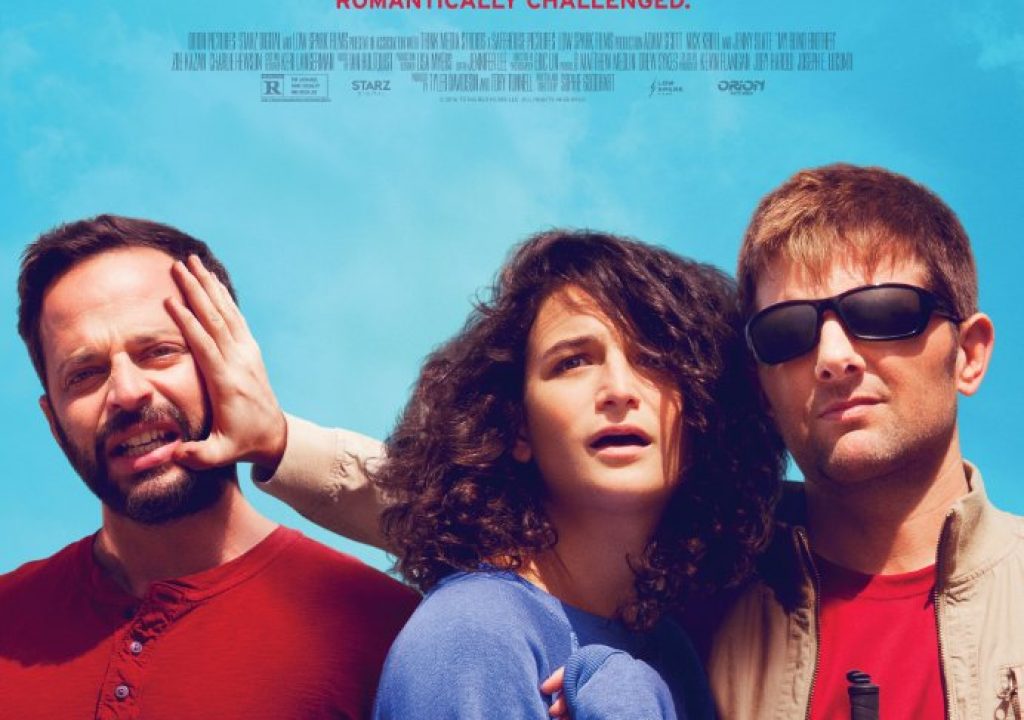Recently, I had the opportunity to talk to Eric Lin who is a cinematographer best known for his work on I Smile Back (2015), Equity (2016) and Rudderless (2014). His latest film “My Blind Brother” hit theaters earlier this year and can currently be seen on Video on Demand. The conversation between Eric and myself not only touched on his most difficult shot from “My Blind Brother,” but also about life as a cinematographer who is trying to balance work and life. To focus topics and for better understanding, I edited the transcribed audio from our interview. I tried to keep Eric’s voice and answers as true to our conversation as possible.
If after reading this transcribed interview between Eric Lin and myself and you want to hear more from Eric then head over to Sight, Sound, & Story. Manhattan Edit Workshop’s speaker series. The workshop will dive into the craft of visual storytelling from masters behind the lens. Joining Eric Lin will be Eric Alan Edwards (My Own Private Idaho), Academy-Award nominated and world-renown Director and Director of Photography Ellen Kuras, ASC, and Richard Crudo, ASC (American Pie).
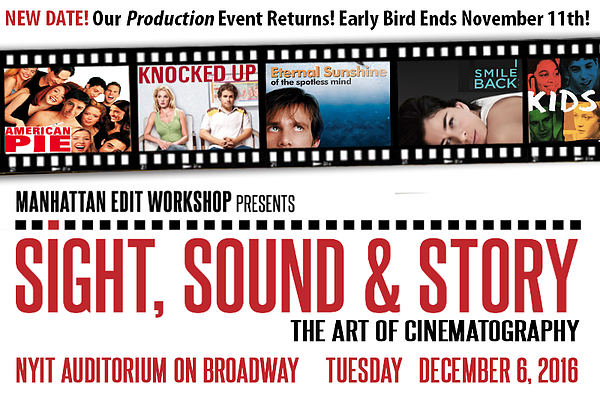
HALLETT: My wife she really loves the small stories–doesn’t like action movies, doesn’t like anything that’s too big or too much hype. There’s an avenue for that now, more of an avenue for her, and she’s really enjoying it. I may experience a Modern Idiot moment, but I feel like people are able to see more of you type of work without necessarily having to go to a film festival.
ERIC LIN: I think that’s a huge benefit of digital distribution, especially all these online outlets for a film. Especially Netflix, which is buying everything, they are really enabling these films that might do well at festivals but not really get seen outside to really get exposed. It’s been great. I feel like it’s a huge boon for indie filmmakers for sure.
HALLETT: As Netflix and Amazon continue to grow are you seeing more of a jump in your career?
ERIC LIN: The films I’ve done have still all done the traditional theatrical route. At least for me, I haven’t quite felt that impact yet, but I do know a lot of folks in the indie community that are starting to do a lot more work on web series and Netflix Original or Amazon Original content. I have a friend, who made indie films for a long time but now she’s starting to get work directing Amazon shows. She’s been able to follow that transition of a lot of indie filmmakers into Amazon Original content or Netflix Original content where they’re able to use their skills and still tell these very intimate stories. There is an outlet for them which is fantastic.
HALLETT: What was the most difficult shot you’ve had to take to date?
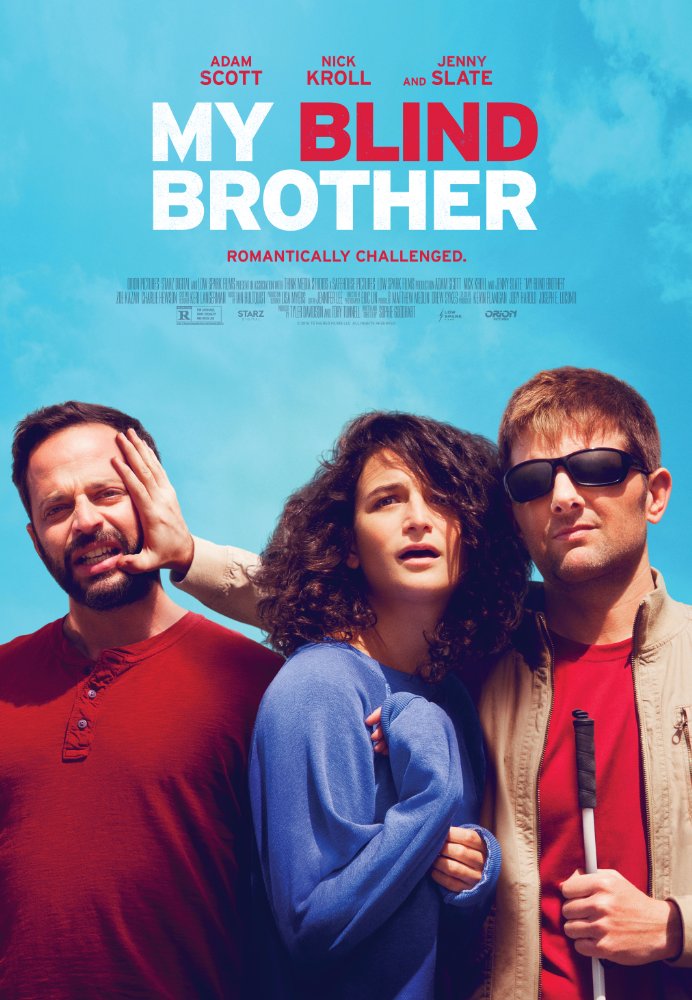 ERIC LIN: The most recent example I can think of is actually a film that’s out on VOD right now called “My Blind Brother,” that was directed by Sophie Goodhart and stars Nick Kroll, Adam Scott, and Jenny Slate. Adam Scott plays a blind person who is an overachieving athlete and he’s training to swim across Lake Erie. Nick Kroll plays his younger brother who lives in his shadow and Jenny Slate plays the woman who comes between them. Towards the end of the film, we have a scene where Adam and Nick are rowing back to shore at night. It’s on the water, it’s at night, and then on top of that, we were shooting on Lake Erie and the weather was insane. It’s a lake, but Lake Erie basically behaves like the ocean so the weather and the water can change rapidly. During the scene, the waves were crashing like crazy. We chose to shoot the scene close to a beach that had these breakers that minimized the waves, but it was still like really intense. We had put lights on the breakers and we had a Condor on dry land with a giant 18K as backlight and then we had a whole set on the beach. You could see the whole set of extras waiting for these two guys to row back to the beach behind them basically. So it was a massive lighting setup because we had to light the whole beach where everybody’s waiting and there are ambulances and police. Then obviously we had to light them out in the water. I think they were maybe 80 feet out from the beach. We had a poor electrician who was on the breaker the whole time we were setting up and shooting and getting pounded by waves for four hours while we were setting up and getting the shots. She was a total trooper. We used Hive plasma lights because they have a pretty good punch and they could be powered by batteries. It was incredible because it was so difficult to get that shot. We had two boats: we had the picture boat with the two actors, Adam Scott and Nick Kroll, and then we had a second boat which had the sound guy, and Sophie the director, and the AD team and waves are going crazy. People were in the water, chest-deep, holding the boats just off camera, but it was still tough to line everything up with the set in the background and to avoid seeing our lights. But it was incredible because, with all the chaos, the scene is a very emotional moment. Actually, I think when you read it on the page you think it’s kind of a quiet moment, it’s right before they return to the beach and are having this really honest conversation with each other, but everything was so chaotic that it almost made the scene quieter and more intimate. I don’t know how to describe it. There was this magic of what was happening around the production which was really infusing what was happening on screen with the actors. Everybody felt it while we were shooting because it was so crazy and wild, but we were able to stay focused on the emotion that was coming across on the camera, it actually came out really incredible and really fed into that moment. It’s definitely one of the scenes I’m proud of in that film, but it was incredibly difficult to get.
ERIC LIN: The most recent example I can think of is actually a film that’s out on VOD right now called “My Blind Brother,” that was directed by Sophie Goodhart and stars Nick Kroll, Adam Scott, and Jenny Slate. Adam Scott plays a blind person who is an overachieving athlete and he’s training to swim across Lake Erie. Nick Kroll plays his younger brother who lives in his shadow and Jenny Slate plays the woman who comes between them. Towards the end of the film, we have a scene where Adam and Nick are rowing back to shore at night. It’s on the water, it’s at night, and then on top of that, we were shooting on Lake Erie and the weather was insane. It’s a lake, but Lake Erie basically behaves like the ocean so the weather and the water can change rapidly. During the scene, the waves were crashing like crazy. We chose to shoot the scene close to a beach that had these breakers that minimized the waves, but it was still like really intense. We had put lights on the breakers and we had a Condor on dry land with a giant 18K as backlight and then we had a whole set on the beach. You could see the whole set of extras waiting for these two guys to row back to the beach behind them basically. So it was a massive lighting setup because we had to light the whole beach where everybody’s waiting and there are ambulances and police. Then obviously we had to light them out in the water. I think they were maybe 80 feet out from the beach. We had a poor electrician who was on the breaker the whole time we were setting up and shooting and getting pounded by waves for four hours while we were setting up and getting the shots. She was a total trooper. We used Hive plasma lights because they have a pretty good punch and they could be powered by batteries. It was incredible because it was so difficult to get that shot. We had two boats: we had the picture boat with the two actors, Adam Scott and Nick Kroll, and then we had a second boat which had the sound guy, and Sophie the director, and the AD team and waves are going crazy. People were in the water, chest-deep, holding the boats just off camera, but it was still tough to line everything up with the set in the background and to avoid seeing our lights. But it was incredible because, with all the chaos, the scene is a very emotional moment. Actually, I think when you read it on the page you think it’s kind of a quiet moment, it’s right before they return to the beach and are having this really honest conversation with each other, but everything was so chaotic that it almost made the scene quieter and more intimate. I don’t know how to describe it. There was this magic of what was happening around the production which was really infusing what was happening on screen with the actors. Everybody felt it while we were shooting because it was so crazy and wild, but we were able to stay focused on the emotion that was coming across on the camera, it actually came out really incredible and really fed into that moment. It’s definitely one of the scenes I’m proud of in that film, but it was incredibly difficult to get.
HALLETT: Other days, when you’re in the middle of that day, do you think, “What the hell did I get myself into? ” or are you just happy I’m in this? How’s it feel? What’s the worst day for you?
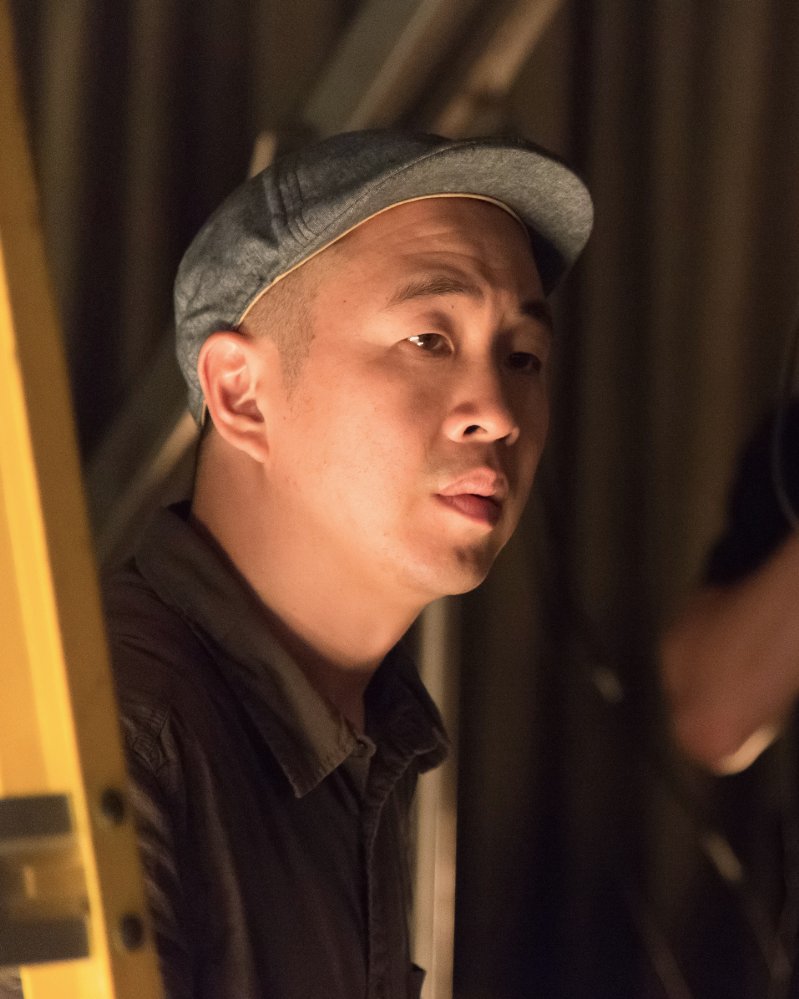 ERIC LIN: A day like that, there is an incredible feeling because in a way in so many of these scenes you’re kind of betting. You’re like, okay I think this is the plan and I think that this all is going to work out and I think this is going to get us there. And, sometimes that totally fails. So this was a situation where it came off so much better than we expected because of the chaos and atmosphere and the weather and the water that we set up we thought we needed, but there was so much more brought to it because of how difficult the circumstances were and what it brought to the actors and the emotions. So in that case, that was like pure elation when you plan for something that’s difficult and you get it and you think you actually got something beyond what you expected. So those days are incredible and I think that’s what we all live for as filmmakers. Worst days. For me, the story is always first, so if there’s anything technical that eats into the time of actually delivering the story, I always find those days very frustrating. We had a lot of water stuff, so we had to bring in a technician to help do some underwater camera housing even though we weren’t underwater we were just on the surface so we’ve got to protect the camera. It takes up so much time and when we’re burning time on set like that my heart always sinks because I know that we’re sacrificing time to actually get the performance because of something that’s just technical. But this film was such a small film it’s unavoidable. It’s not like we could have a second camera team ready or a second camera body being built and housed while we’re shooting something else, it was very stripped down. So those types of days are the ones where I really think we had this plan, but it kind of got awry and we’re just kind of waiting around for everything to snap into place so we can actually get what we need to get but that type of thing is what kind of makes my heart sink on set.
ERIC LIN: A day like that, there is an incredible feeling because in a way in so many of these scenes you’re kind of betting. You’re like, okay I think this is the plan and I think that this all is going to work out and I think this is going to get us there. And, sometimes that totally fails. So this was a situation where it came off so much better than we expected because of the chaos and atmosphere and the weather and the water that we set up we thought we needed, but there was so much more brought to it because of how difficult the circumstances were and what it brought to the actors and the emotions. So in that case, that was like pure elation when you plan for something that’s difficult and you get it and you think you actually got something beyond what you expected. So those days are incredible and I think that’s what we all live for as filmmakers. Worst days. For me, the story is always first, so if there’s anything technical that eats into the time of actually delivering the story, I always find those days very frustrating. We had a lot of water stuff, so we had to bring in a technician to help do some underwater camera housing even though we weren’t underwater we were just on the surface so we’ve got to protect the camera. It takes up so much time and when we’re burning time on set like that my heart always sinks because I know that we’re sacrificing time to actually get the performance because of something that’s just technical. But this film was such a small film it’s unavoidable. It’s not like we could have a second camera team ready or a second camera body being built and housed while we’re shooting something else, it was very stripped down. So those types of days are the ones where I really think we had this plan, but it kind of got awry and we’re just kind of waiting around for everything to snap into place so we can actually get what we need to get but that type of thing is what kind of makes my heart sink on set.
HALLETT: What kind of person succeeds as a cinematographer?
ERIC LIN: It’s people who are focused and who are able to maintain that focus and be creative in the middle of all the highs and lows. Because I think that’s what really difficult. It’s something I always remind directors I work with about that in pre-production we’re always coming up with these shot lists, but we have to be sensitive to what’s happening in front of us. That’s just a blueprint. We have to be able to respond and we have to be able to react because I think too often, especially when you’re getting bogged down in the day or you’re in the weeds, you start trying to knock off the shot list, but maybe that shot list isn’t what’s best for what’s happening with the actors, with the lights, with the environment. I’m always trying to maintain that creative space, to be still in the middle of the chaos to listen to that voice that’s like oh no we talked about doing all this coverage and maybe it’s the oner or setting it up here and the two-shot is way better than setting it up there. I think that takes a certain presence of mind on set. When I feel like that voice speaks to me and I listen to it and I react to it I’m always happy that instinct still remains. I think people who can succeed as DPs are people who can maintain that kind of presence in the middle of the chaos. As we all know as filmmakers, as much as you can plan, that doesn’t mean anything. So it’s not just about getting something when your plans fall apart, it’s about getting something that’s truthful and emotional in the middle of all that. Definitely, I think it takes practice for sure and being abused a lot can kind of help you hone that instinct.
HALLETT: Who fails? When you look at them, you see them and say I don’t see them thriving? Who is that person?
ERIC LIN: DPs who don’t really allow room for outside voices in their process, I think they have a hard time growing. For me, the reason I like working with the collaborators that I do is that they are invested in the story we are telling and in them being invested they are the ones who are also coming up with great ideas. I think creativity can come from anywhere on set, and if you can inspire people to collaborate, then it only makes the whole project better. I look for crew who are paying attention to the story and watching the story and knowing what we want to execute and enabling that vision and helping to make it better, not just clock in and out, show up and set up a light and sit back down. What I try to do with my team is to try to find people who I can achieve that with so that we can inspire each other. I feel like people who don’t succeed are doing the opposite of that, who think maybe they have the only idea or the only successful idea and everybody should fall in line behind them. It might be different if you’ve been working on a 100-million dollar film, but at least at the level I’m at, it’s not the case.
HALLETT: Is it hard to believe that you’re doing what you’re doing or that you might be considered an influential talent in your field?
ERIC LIN: I feel very lucky every time I’m shooting and people want to work with me. I think it’s a really privileged position. I feel like I’m learning so much. Every project has so many different challenges, so I don’t feel like I’ve mastered anything yet. I feel like I’m learning and continuing to learn. I feel lucky because in general the cinematographers and DPs I’ve worked with are all very open and sharing and I enjoy when we’re able to reach out to each other and find advice for both crew and technical issues and all these sorts of things. So yeah, I definitely feel lucky for what I’m able to do.
HALLETT: Tell me a little about your journey. How did you become a filmmaker?
ERIC LIN: When I was a kid we were always involved in the arts. I took oil painting classes. We read a lot of comics and we drew our own X-Men Comics. In high school, I learned photography for the first time in high school and just fell in love with it and became the photo editor of the yearbook. I just loved the process of creating images and sharing them and telling stories with them. I went to undergrad in Berkley. I double-majored in Sociology and Film Criticism–they didn’t really have film production major there. At Berkley, I learned a lot about the functions of stories in culture and society and how it influences us and what we take from it. I became really interested in not just telling stories but also how storytelling can shape our thoughts and our feelings and emotions. After Berkley, I applied for the film program at NYU and I was accepted. At NYU, I just started shooting as much as I could and met a lot of great people there who I still consider close allies.
HALLETT: What kind of advice did you get along the way? Was there any helpful advice?
ERIC LIN: I think no one said it explicitly, but what I ended up learning is how everybody finds their own way and that it takes a lot of patience and persistence. Through the highs and the lows, it helps to really focus on the process. If you’re focused on the process and you feel like you’re growing as an artist with each project then whatever the outcome is and wherever you are in your career, you’ll be proud of it.
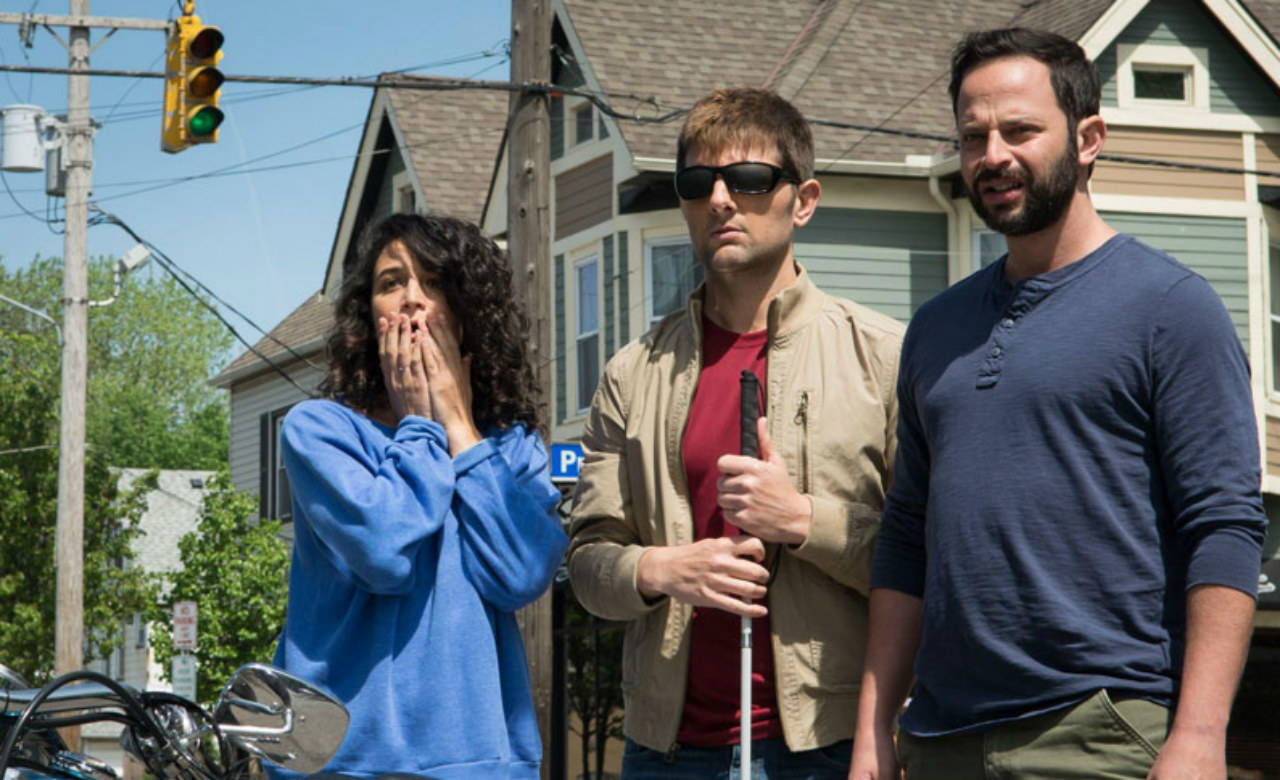
HALLETT: What kind of advice would you give? Someone who’s 22, just finished college, what would you say to them?
ERIC LIN: I think what is difficult to learn is how to find your voice as an artist and how to maintain it and how to maintain creativity when things are tough. I think that comes down to finding your voice. But doing so means really being introspective and really knowing what inspires you as an artist. It’s such a technical craft but that is something you can always learn. You may not always find inspiration in film, maybe you find it sociology or science or literature. It can come from anywhere, but the most difficult thing is finding that deep inspiration within yourself.
HALLETT: If you weren’t doing this what would you be doing, if you weren’t a filmmaker?
ERIC LIN: Huh. Good question. Let’s see. I like working with my hands a lot. I don’t know, I might be…maybe designing furniture? Building furniture? I don’t know. but I really do enjoy sharing too. I mean, I think at some point I’ll probably want to teach, so if it wasn’t filmmaking hopefully I’d be teaching something else. I think that’s part of filmmaking too. You create the story and you want to bring it to other people. So maybe I would teach furniture building.
HALLETT: What kind of world do you favor over anything else? Commercial, music videos, or documentary?
ERIC LIN: I love shooting features. I love the collaborative process of finding the language of the film. I especially love working on features with directors who have a unique vision, who are wanting to do something that hasn’t been seen or trying to invent something kind of new in terms of the cinematic language. That collaboration with the director that is so intense and so fruitful, that’s always a process I love.
HALLETT: Making features isn’t like most jobs, it’s a lifestyle isn’t it? How do you balance? Family?
ERIC LIN: This is a great question. I just had a little girl. So she’s very fresh to the world and I have only been doing some short commercial projects that are local recently so I can be with her. She’s going to change everything. Last year I was able to shoot three features. Two of them were out of town and I was gone for six months of the year. So it’s going to change what projects I choose and what projects I’m able to work on, for sure. What you’re willing to spend your time on becomes much more precise because you don’t have as much time.
HALLETT: So you’re just trying to figure it out, still.
ERIC LIN: Yeah, I have no advice right now. I’m seeking advice, so you can have your readers send me advice.
HALLETT: I have a couple questions that are a little bit different. Because this is obviously for PVC, a lot of the guys who read this are going to be people shooting on a sub-$15,000 camera. Would you ever even consider shooting a feature on like a Sony FS7 or Red Raven or Blackmagic URSA mini?
ERIC LIN: I think it really depends on the project. I try to think about myself as agnostic when it comes to cameras, though I favor the Alexa for sure for more dramatic work. But there’s a project I’m talking to a director about in Japan, and we don’t want the footprint of a filmmaking crew so the actors can be more natural in the environment. For that project, we are looking at all types of cameras. I think a perfect example of how you have to leverage the right camera technology for the story is “Under the Skin.” They were able to use the technology in this way to get these environments and these scenes that were so real, and that was because the machinery or filmmaking was hidden. I think that is what is so empowering about new technology, that it allows you to get these stories in ways that you can never get, like rigging all those surveillance cameras around the van with Scarlett Johansson driving around at night and totally making it invisible. I feel like I would certainly consider these kinds of cameras especially for stuff where you want the machinery of the filmmaking has to be very small. I shot a tiny feature in Cuba called “Semper Fidel”. We were officially sanctioned by the government but the only way we could make the film is if we were small enough, like a news crew basically. That was when the 5D was coming out and we went down there and shot the whole feature with it. This was certainly a case where that camera allowed us to tell that story. So I think choosing a camera is about wielding technology to allow you to get these certain kinds of stories
HALLETT: What’s next for you? What are your goals in the next five years?
ERIC LIN: I think the main goal is to figure out how to balance work and family. I’m hoping to continue to shoot features that are interesting and creative and inspiring. I love telling stories that aren’t really commonly seen and I hope to continue to find those stories and bring them to people.

Filmtools
Filmmakers go-to destination for pre-production, production & post production equipment!
Shop Now